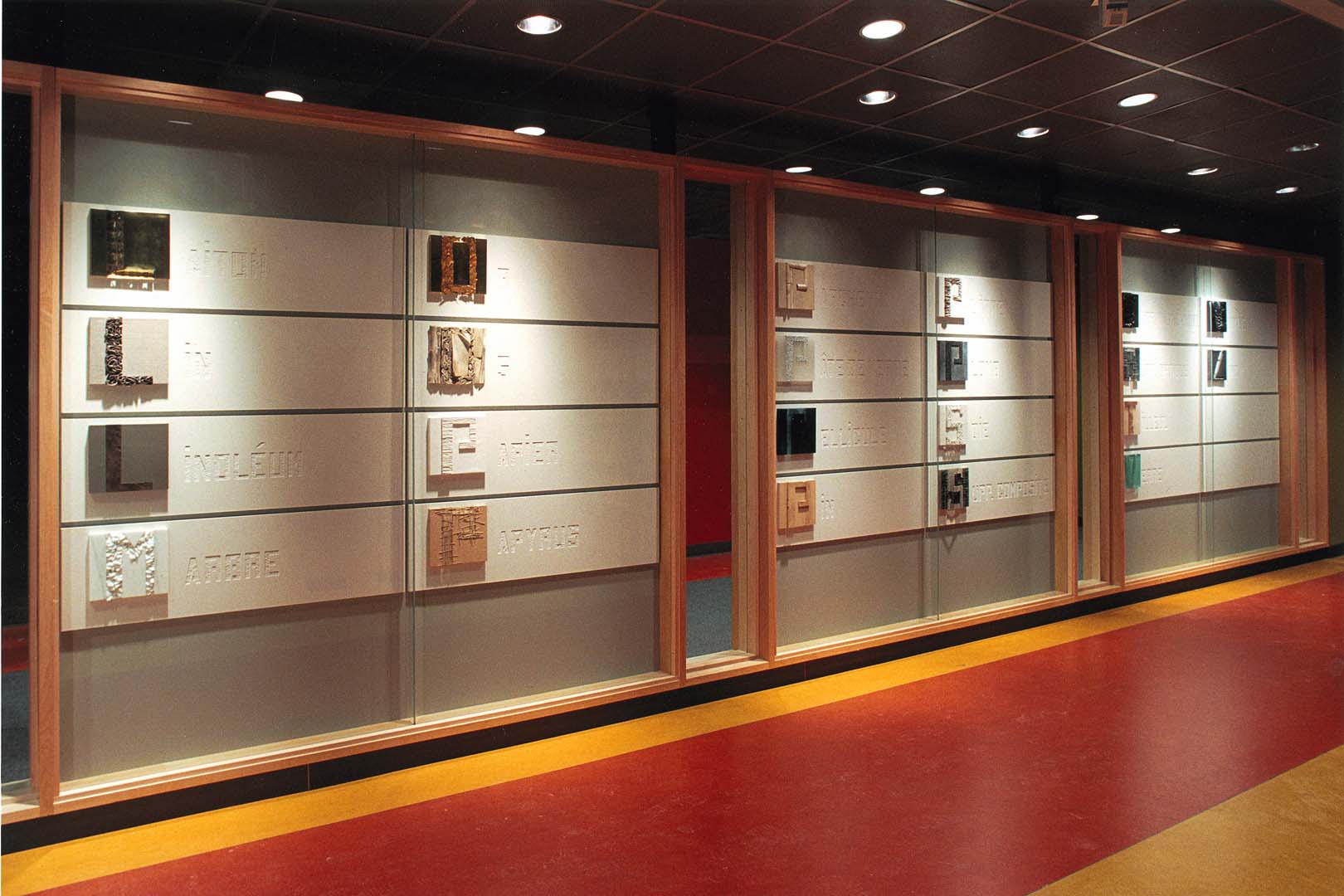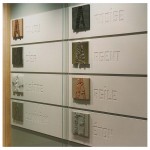

Lisette Lemieux was born in Arthabaska and completed a bachelor’s degree in education at the Université de Sherbrooke before beginning her studies in art. She holds a bachelor’s degree in art from Université Laval, a diploma in art history from the Université de Montréal, and bachelor’s and master’s degrees in visual arts from UQAM.
Since 1975, her work has been included in numerous solo and group exhibitions in Québec and abroad. She has also produced a number of works of public art, including Transcription 92 (1992) at the Centre Pierre-Péladeau and Kristallnacht (Nuit de cristal) (2003) at the Montreal Holocaust Museum. In 2006, her work Liber was presented to UNESCO by the Ville de Montréal on the occasion of the event Montréal, World Book Capital.

Artwork description
This artwork had been in exhibitions presented in the artist-run centres AXE NÉO-7 (Hull, 1995) and CIRCA (Montréal, 1995), before it was acquired by the Ville de Montréal in 2002. At the request of the Public Art Bureau, the artist agreed to reconstruct her work – a part that was on the floor no longer figures in the current composition – so that it could be integrated into the lobby of the new Bibliothèque de Parc-Extension, in 2002. The educational nature of the artwork fits particularly well with the reception area, especially because the library is situated in the William-Hingston complex, a major cultural and multi-ethnic hub.
Table des matières de supports du savoir is composed of a repertoire of 46 panels on which is a list of materials serving as supports for written, artistic, and scientific knowledge. In this anachronistic nomenclature are found words for various materials, including mahogany, zinc, slate, fibre optics, papyrus, and vinyl. Each word is engraved in a white-painted gypsum panel. Through the use of different techniques, the initial dropped capitals are made of the material to which the word refers. This treatment of the capital letter, as well as its being placed in relief in a square, is a contemporary interpretation of the skilled handiwork of medieval illuminators.
Tracing, literally and materially, the history of knowledge and its communication, this table of contents illustrates the artist’s particular interest in language and its constituent elements.



